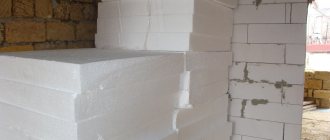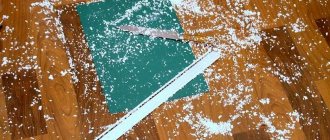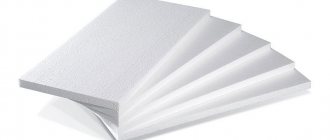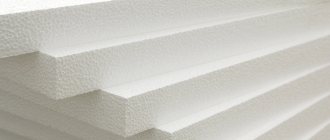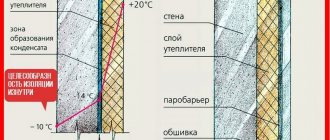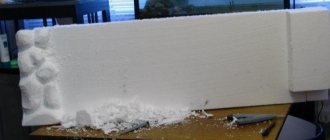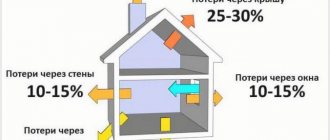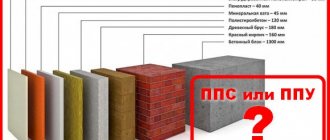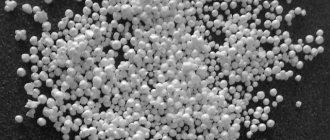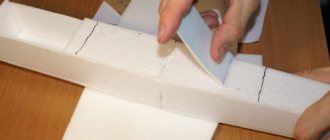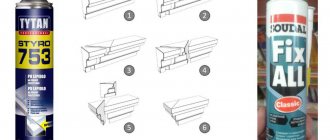There is a type of material called recyclable materials. This means they can be reused. One such material is expanded polystyrene or foam. We encounter it very often. For example, it can contain equipment, dishes, and furniture. Polystyrene foam is an excellent transport material. In addition, it is an excellent insulator. Many people who have accumulated foam products simply throw them away. However, few people know that they should not be thrown into the trash, but must be disposed of or recycled. The thing is that it can pollute the environment. Polystyrene waste does not decompose. Although they do not affect plants in any way, animals may suffer. How then?
The polystyrene foam will have to be recycled or handed over to recyclers who will do everything themselves. In this article, we will learn what polystyrene foam is made of, why recycling is needed, and how to make polystyrene foam at home.
The process of creating polystyrene foam
This material is made from expanded polystyrene by foaming it. Almost 98% of it consists of gas. There are 6 stages of creating polystyrene foam in an industrial environment:
- Foaming.
- Drying the resulting granules.
- Stabilization.
- Baking.
- Maturation.
- Slicing.
Let's look at each of the stages. To begin with, the raw materials are poured into a foaming agent, after which the steam generator generates pressure at which the granules begin to increase from 20 to 50 times. The entire foaming process takes 5 minutes. When the desired size is reached, the raw materials are unloaded for drying. It is needed so that excess moisture on the granules evaporates. Everything happens due to hot air directed from bottom to top. Drying and shaking takes about 5 minutes.
Then the raw materials are moved to bunkers, where they are aged for 4-12 hours. The foam is then formed or baked. The main task is to connect all the granules, creating a slab or other desired element. To do this, they are poured into a mold and subjected to pressure under high temperature from steam. Baking lasts 10 minutes. Next, the finished foam must be left to rest to get rid of moisture and tension inside. Sometimes ripening lasts a whole month. At the end of this stage, the block is installed on a machine that cuts the material into shape. The machine has nichrome strings that heat up and cut foam with ease.
The production also processes foam plastic. After all, when created, pieces remain. So they are processed. Why recycle material at all?
The principle of operation of a do-it-yourself foam crusher
In the production of foam chips the following is used:
- production of granules of a given size using a special technology by foaming polystyrene balls;
- waste recycling - shredding polystyrene foam residues in special structures for shredding polystyrene foam.
Crushed material is used in construction as a component of cement mortar to level the surface and form concrete floor screeds. The recycled foam product is the basis for the production of polystyrene concrete.
The expanded polystyrene shredder consists of the following components:
- grounds;
- motor casing;
- bunker;
- tank;
- damper handles.
The crushing chamber structure includes a body, a base, a knife plate and a mesh. Using an adjusting mechanism and a spring block, the distance between the rolls is set.
Waste foam is loaded into a tank, from where it enters the work area. During rotational movements, the shaft passes through the axes of the drum, the foam falls between the knives and is cut into fractionated parts.
The crushed material is removed from the working area for sorting onto a mesh with air. Large pieces of waste are again returned under the knife for grinding, and the crushed foam is fed into the dispensing hopper.
Recycling material - why and how
If we talk about large-scale production, the goal is clear - there is a lot of waste, and this means additional funds. What can we say about us, ordinary users? The thing is that over the years there is more and more material in the house. It takes up space and accumulates more. It is not recommended to burn it, as it releases harmful substances, and throwing it away is also not an option.
So it turns out that the correct and effective solution is to recycle it or do it yourself. This type of recycling of polystyrene foam will help you use it for another purpose and get rid of excess waste at home. To do this yourself, it is important:
- will be determined for the purpose of processing and creating polystyrene foam;
- choose the optimal place where you can bring everything to life;
- will determine the method of influencing foam waste.
Many people choose to use polystyrene foam as packaging material. Storing it in finished form is problematic, but grinding it will help solve the problem. To start recycling, you need a foam crusher.
There are several ways to recycle or dispose of polystyrene foam:
- Using a chopper. It will help make crushed foam, which can later be used for various purposes. If there is no crusher, then you can do everything yourself. But, there is one feature - the granules are light, so for manual work you will need a bag or other container.
- As for recycling, it is very easy to do. If you no longer need polystyrene foam, simply treat it with citrus peel concentrate. It’s even easier to buy acetone or solvent and melt it in them. When exposed to these liquids, the foam becomes liquid.
- The last option is to melt polystyrene foam using heat. The finished raw material is suitable for a garden plot in the country. It is mixed with soil for beds or flower beds. Thanks to this, moisture will remain in the ground longer and be better absorbed. In severe drought, the soil will not crack. However, such soil will not support rotting.
Some may ask: why do I need crushed foam? It can be used not only for transportation, but also as a thermal insulation material. Let's look at where else it will come in handy.
What you need for cooking
To make an adhesive mixture from polystyrene foam and solvent, you will need a reservoir. A closed container, such as a small steel or aluminum canister, is best suited for this. A 2-5 liter metal can will also work.
The adhesive base can be granulated foam. If you don’t have it, crumbled protective containers for household appliances, equipment, and appliances will do. Remains of sheet insulation made of extruded polystyrene foam will also come in handy.
You will also need a solvent. It can be purchased at a hardware store.
Due to the toxicity of the liquid, do not forget about personal protective equipment. Before work, you will need to prepare rubberized gloves, goggles and a respirator.
It is best to mix the composition in a well-ventilated area.
What solvent to use
Foamed polystyrene is best dissolved by xylene, toluene, and benzene. However, these liquids, consisting of aromatic hydrocarbons, are very toxic. If you work with them in a closed room and without protection for at least 30 minutes, you can get poisoned.
How to dissolve polystyrene foam to obtain glue:
- thinner for nitro enamels (for example, P-646), it is the least toxic;
- construction acetone;
- pure high-octane gasoline grades A-92, A-95;
- dichloroethane.
To ensure the purity of gasoline, it is best to purchase a container with a composition for cleaning brushes at a hardware store. No need to use leaded material. As well as bio-gasoline containing motor alcohol. They are mixed with water and diesel fuel. Additives are very toxic.
Dichloroethane and acetone are also poisonous. However, the thick ethanol composition holds almost all materials together. Acetone glue is not as strong. But it is more fluid, which simplifies the work.
Foam selection
The adhesive base should not be contaminated with dust, soil, construction and paint materials. It is highly undesirable to use foam insulation for external pipelines. It contains fire retardants and other additives. They are extremely toxic and change the properties of the mixture.
To prepare foam glue at home, the following types are used:
- Pressed material. The sheets and packaging are durable, do not break or crumble. Therefore, before preparing the glue, such material is not broken by hand, but cut with a knife. It dissolves slowly.
- Unpressed foam. Consists of foam granules stuck together. With physical impact, they are easily colored. Then they quickly dissolve in the hydrocarbon composition. This is the best option to prepare foam glue.
There is also a special type of foam - EPS (extruded polystyrene foam). This is a homogeneous material with high density used for the production of insulation boards. It is difficult to grind and dissolves relatively slowly.
Using recycled polystyrene foam
Construction is a process that requires large investments. And if you have polystyrene foam, it will definitely find its use at a construction site. For example, foam chips can be used as filler for site depressions and uneven areas. It is clear that they cannot level the road, but it is easy to make a path or other unevenness. Recycled polystyrene foam can be filled into a well of different hole or cavity diameters.
Note! Over the years, the material will not change and will remain in the form and form in which it was left. It perfectly absorbs and thaws moisture. Therefore, metal containers with polystyrene foam are not so susceptible to corrosion.
In the construction business, recycled polystyrene foam is used to create lightweight bricks. Its structure is such that it is popularly called perforated. Even lightweight concrete has appeared, which, as experts say, is no less durable than regular concrete. This is polystyrene biton - an excellent building material. It consists of Portland cement, foam granules itself, water and an air-entraining additive. Sometimes sand is added to the mixture.
Another area of use is design. Designers love foam plastic very much and use it in a variety of ways. It is used to decorate walls, create pots, plant pots or similar accessories. Garden figurines or stands look very nice. They are created by pouring them into molds and heating them. You can find a variety of options for making polystyrene at home.
Features of the foam cutting process
In its structure, polystyrene foam is a foamed substance that mainly consists of air. It is for this reason that it is quite light and not difficult to work with. However, when working with it, you should not mistakenly assume that absolutely no problems will arise. After all, polystyrene foam is a fairly fragile material that is easily susceptible to even slight physical impact.
If you cut it with an ordinary angle grinder, you shouldn’t count on perfectly smooth edges. Also, if you use even a sharp knife, it will crumble a lot when cutting. It is best to use a thermal knife for processing to avoid mechanical damage.
However, such a device is very expensive, and it is not economically profitable to buy it for cutting several sheets of polystyrene foam. Therefore, in some cases, to cut this building material, an ordinary sharp knife is used, which is heated to a certain temperature immediately before use.
Huge cutting
Cutting with a stationery knife
When carrying out construction work that involves insulating walls or various floors of a building, cutting polymer materials with thermal cutters is not always justified. As a rule, structures of this type have a strict geometric shape, so in this case, an ordinary stationery knife can be used to cut polystyrene.
The main condition in the case of using a stationery knife for cutting this polymer material is that its blade is as thin and sharp as possible, and its length is greater than the thickness of the material being cut. You need to cut polystyrene on a solid, stationary base. For marking, you can use slats or rulers.
Nichrome wire cutting
To effectively cut polymer materials, you can also make a special cutter, the main element of which will be nichrome wire. The cutting process itself is performed using nichrome wire heated to +120 degrees Celsius, which rather than cuts, melts the material. Thanks to the use of this method, even cuts are obtained, and polystyrene does not crumble or break during such processing.
These cutters are made from nichrome thread through which an electric current passes. Making such cutters with nichrome thread is quite simple. Unlike machines, such a cutter is a compact, portable device. However, its disadvantage is that it is impossible to independently control the heating of the nichrome thread and select the operating temperature.
Cutting with an electric grinder
For rough cutting of foam plastic, you can also use an ordinary grinder. However, in this case, after carrying out the work and processing it, the output will be a large amount of construction waste. In addition, when using a grinder when cutting polystyrene, it is unlikely that you will be able to get neat and even cuts. When using a grinder, it is recommended to use a thin disk for cutting.
Thread cutting
Special knife
On the building materials and hand tools market, you can purchase special devices that were designed to cut foam plastic. Such devices that can quickly cut polystyrene include a special knife. It has good sharpness and is able to quickly and efficiently cut polystyrene, the thickness of which does not exceed 8 centimeters. To cut thin foam, it is recommended to purchase knives with a blade of medium hardness.
Cutting foam with a string
To minimize the destruction of the structure when cutting foam plastic with your own hands, it is recommended to use a string instead of an ordinary knife. To make the strings cut better, it is recommended to preheat them immediately before use. You can assemble a cutting machine that uses a string at home.
To lower the temperature level in the network, it is recommended to additionally connect a step-down transformer. The operating principle of such a device is approximately the same as that of a cutter that uses nichrome thread. Thanks to the use of a string, you can successfully cut material whose thickness does not exceed 2 centimeters. The string used should be as sharp as possible and also thin.
Thermal methods for cutting foam plastic
In some cases, when working with polystyrene foam, you need to cut out various shapes of irregular geometric shapes (semicircles, shapes with complex contours) from it. Therefore, in this case, using a knife or hacksaw to cut out complex shapes will be ineffective.
To cut complex geometric shapes, it is recommended to use thermal cutting methods. For example, for these purposes you can purchase a special thermal knife on the construction market or build a cutting machine yourself at home.
The principle of using thermal methods for cutting is that electrical voltage is applied to the cutting elements of the devices used, which is why they gradually begin to heat up to the required temperature. The temperature level of the cutting part of the tool is regulated by a special device. Expanded polystyrene is a low-melting material, so it is easy to cut using a string heated to the required temperature, a knife, or wire.
thermal cutting
Do-it-yourself material recycling
If you want to know exactly how you can recycle polystyrene foam, we suggest you consider the step-by-step instructions. All you need is enough foam and a crusher. Then you can get polystyrene foam granules and use them for your own purposes. If you don’t have your own foam crusher, you can make one yourself. After all, factory models have a very high price.
Here's what you'll need to have a new useful tool on your farm:
- sewer PVC pipe, diameter 50 mm;
- tape measure and marker;
- metal file;
- a wooden beam that would fit inside the pipe;
- metal screws;
- screwdriver and drill;
- metal studs with bolts;
- Chipboard or plywood to create a box.
Using this set of tools and materials, you can create a working foam crusher. With its help, sheets or other foam crafts will turn into crumbs. The mechanism is based on a moving part with teeth, which crush the foam into granules. And thanks to the container or box, it is easier to direct the material to the rotating mechanism. You will learn exactly how to create a crusher in this video.
So, when the crusher is ready, you can start working. Here's what to do:
- Choose a suitable location. Alternatively, choose a garage, warehouse, storage room or shed.
- Install the crusher, taking care of the container underneath it, where the crumbs will fall. This could be a bucket, bag or wooden box.
- Foam sheets are easy to crush. But as for figured products, it is better to break them into pieces with your hands in advance.
- Now all that remains is to turn on our homemade unit and gradually process the raw materials.
Thanks to this technology, most of the granules will remain intact. This means that they will cope with their task better than ever. You just need to be careful, as the foam is electrified and very light. It is important to make sure that there are no drafts in the room, otherwise you will have to remove everything from the floor later. Now the foam can be collected in bags and used immediately or stored until it has its time.
Note! If you melt the foam with acetone, it can be used in liquid form as glue. Although the mixture cannot be called safe.
Properties and purpose
In construction, polystyrene concrete is used in the form of fresh mortar or blocks, and the scope of application depends on its special properties.
Material characteristics
This material can be placed on a par with foam and aerated concrete. It also has low density and light weight. And it differs from ordinary concrete based on sand or crushed stone in its high heat-shielding properties.
The composition of the mixture gives these features to the material called polystyrene concrete. More precisely, the type of filler. After all, polystyrene foam is considered one of the lightest and most effective insulation materials.
I will list its other properties to make it clear why it is so actively used in various areas of construction. This:
- High tensile and compressive strength, which allows the construction of load-bearing walls from it;
- Non-flammability;
- Low water absorption, which allows maintaining low thermal conductivity even when wet;
- Frost resistance reaching up to 100 cycles;
- Excellent adhesion (adhesion) with other building materials;
- Higher elasticity than cellular concrete;
- Ease of processing and finishing;
- Resistance to atmospheric and biological influences such as precipitation, sunlight, fungi and mold.
Application area
Above, information was given about the density that polystyrene concrete can have: technology + compositions + recipe. This parameter mainly determines the scope of application of the material.
Table for determining the brand of warm concrete for use for different purposes
Depending on the purpose, the solution is used in different ways:
- For floor screeding or installation and insulation of floors - in liquid form;
- To build walls, blocks are made from mortar by pouring it into molds. They can be any size;
- You can also build a monolithic house from polystyrene concrete by pouring the mortar into the formwork with reinforcement installed in it.
All this reduces the cost of construction, and the houses are warm and durable.
Let's sum it up
Polystyrene foam is a wonderful and versatile material. It can be used in a wide variety of fields. Its main advantage is its low cost, lightness, immunity to moisture and excellent noise reduction and sound insulation performance. And the fact that it can be reused makes the material simply irreplaceable in construction. So if you have a small amount of foam that's just lying around, why not give it a new life? Once processed, it can be used as dry insulation. And if you think carefully, there are a lot of use cases.
Recommended Posts
Japanese houses made of polystyrene foam
Cement mortar for bricklaying
Gypsum stone for interior decoration + photo
Polymer concrete: composition, characteristics
What kind of mortar are fireclay bricks placed on?
Polyurethane adhesive for foam plastic
Expanded polystyrene production technology
This technology consists of several stages; let’s get acquainted with each of them.
Stage one. Procurement of raw materials
The raw material in this case is expanded polystyrene foam, that is, products of the chemical industry. The parameters of the material produced depend on how high quality it is and what its service life is. After all, the older the raw material is, the longer it has been stored, the more difficult it will be to foam its granules. As for density, this indicator directly depends on the dimensions of the final granules: the larger they (granules), the higher the indicator will be. Conversely, low-density products can be made using small granules.
Note! If the foam plastic that you plan to sell will be used in construction work, then a fire retardant (this is a substance that prevents ignition) must be added during production.
The manufacturing process itself must begin with the formation of water vapor, the temperature of which will be 115-170 degrees, and the pressure - from 0.8 to 6 atmospheres. For this purpose, foam production equipment such as a steam generator is used. By the way, the steam generator itself, depending on the type of energy resources used, can be:
And in order for the maximum volume of generated steam to be used, it is necessary to use a steam accumulator.
Stage two. Foaming the granules
The raw material is supplied to the foamer in the quantity necessary to create a material of a particular brand, after which steam is supplied. The granules, being exposed to this steam, begin to foam, which is accompanied by their increase in volume by approximately 25-50 times. As a rule, to obtain 1 cubic meter of raw materials that have already undergone foaming, about 15 kilograms of raw materials are required.
The foaming procedure itself lasts no more than seven minutes. At the end of this procedure, the granules are fed into a special drying unit, which removes excess moisture formed when exposed to steam.
Stage three. Drying
Next, the granules, as we just noted, are fed into a drying apparatus, in which they are treated with heated air and are deprived of excess moisture, but the original volume remains the same. Typically, air enters from below, permanently mixing the particles.
Note! During the drying process, wet granules rise, while dried granules, on the contrary, rise and are transferred to the aging bunker through a pneumatic transport pipeline.
The drying procedure itself takes no more than five to ten minutes.
Stage four. aging
In such bunkers the granules are finally stabilized. The duration of this process depends mainly on environmental conditions. The number of bins themselves depends on the level of system performance, and their dimensions and volume are determined by the height of the ceiling in the workshop.
It is worth noting that different brands of polystyrene foam are often stored in separate bins. The material can be aged for 5 to 12 hours, after which the already stabilized granules are sintered.
Stage five. Foam sintering
Through a special loading hole, the block mold is filled with prepared granules, and they are supplied here under the influence of air, which is pumped by a compressor. Next, the granules are sintered under the action of the same steam coming from the steam accumulator. Note that the quality of baking granules depends on three factors, such as:
- steam supply time;
- its (steam) pressure;
- temperature.
After this, the polystyrene foam is cooled (for this purpose, foam production equipment such as a vacuum unit is used) and takes on the required shape. The duration of the procedure depends on the brand, although on average it takes no more than 10-12 minutes.
Stage six. cutting
The final stage of production is cutting. At the end of baking, the unit door opens and the polystyrene foam block is pushed onto a special table under the action of a pneumatic pusher. The slabs are laid out vertically, after which they need to be left for several days. This is necessary so that they finally get rid of excess moisture and undergo stabilization.
After this, the blocks are cut by a special machine into sheets of the required dimensions and thickness. If necessary, protrusions and grooves are made (the waste, as noted above, will be subject to further processing).
The slabs are packaged and sold. As you can see, in reality there is nothing complicated here, as you can see when watching the thematic video material.
Application of pre-expanders
Pre-foamers are designed for beating polystyrene granules. They are exposed to steam, as a result of which the material acquires the required density. The optimal density for polystyrene foam is about 15 kg/m3.
The choice of pre-expander depends on a number of parameters:
- performance;
- the presence or absence of a steam generator, hopper, dispenser in the material;
- granule receiver capacity;
- what is included in the material (carbon or stainless steel);
- operating principle (in continuous or cyclic modes).
The operating principle of the foaming apparatus is:
- loading polystyrene into the pre-expander;
- creating pressure inside the unit;
- exposure to steam heated to 1000C on polystyrene;
- foaming the processed material and increasing its volume to the desired value;
- sending the foam material to the drying unit.
Foam production diagram
Foam production often uses cyclic pre-expanders.
Using a re-foaming container
The technology often requires secondary foaming of polystyrene foam. A special container is used for secondary foaming of the material. It contains a bag into which the previously foamed material is placed. The purpose of the container is to achieve expanded polystyrene density of 7 kg/m3.
Purpose of the receiving bunker
An important element of equipment for the production of foam plastic is the receiving hopper. The foamed product is stored in it for the purpose of thorough drying. Any bunker includes a fan that creates the necessary temperature and humidity inside it. In the process of blowing the foam granules, they are filled with air. The optimal temperature in the block is about 200C. With it, the product is aged for 12 hours.
The re-aging technology is similar to the procedure described above. Re-foamed foam is similarly loaded into a container for drying and left there for a certain amount of time.
Using Block Forms
Dried foam granules are delivered by pneumatic transport to a special unit for forming block molds.
Block form structure
The block form is a container with granules entering it. After loading the foam, the block molds are closed.
Inside the block mold there is a supply valve through which it is filled with steam. Initially, hot steam is supplied, under the influence of which the granules foam and stick together, forming a monolithic block.
At the final stage, the blocks are treated with cooled air. Cooling occurs by pumping out previously heated air with a vacuum-type pump built inside the block mold.
It takes 24 hours for the resulting monolithic foam blocks to sit inside the container, which is kept at room temperature.
Application of slicing machines
The resulting polystyrene foam blocks are sent to a special cutting machine. Such machines are capable of cutting blocks in both planes: vertical and horizontal.
Product cutting occurs in two modes. It all depends on the type of equipment used and its complexity. The automatic control mode is most often used.
The required mode is set on the control unit, and the output is smooth, cut block products. A number of cutting machine models do not have automatic control and require operator participation in the process.
The composition of automatic machines includes the following elements:
- cutting element;
- electronic control system.
The cutting element is steel strings heated to a high temperature. They cut the blocks into pieces of a given shape and size. The strings for the unit are made of refractory steel.
The control system allows you to automatically adjust the desired size of the blocks being cut, the temperature of the strings of the cutting element, and their speed of movement during cutting.
Some machines are equipped with additional components:
- miter saws, which are used to perform tongue and groove work;
- rangefinders;
- transformers that heat the cutting strings.
Thermal cutting machine with heated strings
The production of platbands, skirting boards, and slate insulation required the creation of special cutting machines operating in 3D format. The cutting process of products is controlled using a special computer program. The cost of such 3D machines significantly exceeds the cost of standard automatic devices.
Waste processing machine
The equipment for the production of foam plastic includes a device that processes waste. The production of foam plastic products is characterized by a waste-free principle. Blocks damaged during production are not thrown away, but are sent to a special container. In the container, the products are crushed into individual granules. Hammers act as crushing devices.
Foam crusher
After crushing, the granules are placed in pneumatic transport and fall into a block mold, in which the process of producing monolithic polystyrene foam is repeated. The technology involves the use of only 10% of raw materials sent for processing in block forms. The remaining 90% of raw materials are primary.
Packaging unit
At the final stage of polystyrene foam production, the created monolithic blocks are packaged. A special packaging machine is used to wrap the products in plastic film. In it, the products are sent to a warehouse for storage. As an alternative to polyethylene, shrink film is used.
Foam production
Advantages of a foam production business
Polystyrene foam is used in almost all industries, in particular:
- in the production of building materials for insulation, sound insulation, decorative elements;
- in the production of packaging materials;
- in medicine for the manufacture of heat-stabilizing containers;
- in the shipbuilding of small vessels to fill special compartments to ensure unsinkability.
Mini-factory for the production of foam plastic
The production of foam plastic products is a fairly simple process; the technology does not require specialized education, although it is, of course, welcome. Equipment manufacturers make a mini - this means that it is completely ready for work, they also provide a complete description of the technological process, with all proportions.
Foam production
In Russia there are not many factories producing foam plastic products, and foreign products are quite popular, which have a high cost. All this speaks of the great competitive advantages of this business, since demand in this industry exceeds supply, and, therefore, the owner can receive excess profits.
